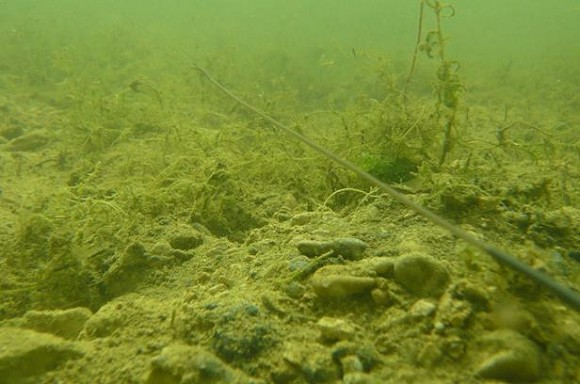
How to beat gravel
Fish a gravel pit? Here's how to give it two fingers...
I have just joined a new club water which is fairly large and has several large gravel bars at long-range. The lake also contains lots of crayfish. What type of main line, leaders, rigs and lead set-ups would you use (leadcore is banned by the way)? Graham Fox, Slough
Lewis Read says: Balancing your tackle to cope with the opposing demands of maintaining the necessary strength to cope with big fish angling over pronounced gravel bars and the ability to hit the range that the fish congregate occasionally is a tricky balance to nail.
Assuming you have the rods and reels to do the job the fine detail is the line choice and then your lead clip system. The last thing you want to do is use such a fine line that ensures you easily get the range but loose any fish hooked because the low diameter means that the line is less able to withstand abrasion or shearing on sharp flints that often abound on top of the bars. By using the highest diameter line that still allows you reach the ranges necessary you will have the best chance of landing fish.
Line choice is very personal, but pointers would be to look for a line with a soft smooth supple feel (these tend to cast well) great knot strength and good abrasion/shear resistance. Diameter would be between 0.30 and 0.35mm. For me the choice is a simple one, as having been involved with the development of Gardner HydroTuff I know how good this line is. In 0.35mm I can cast a long way (much further than I can get freebies) and it ticks all of the vital performance boxes.
A lead clip is essential for controlled release of the lead, but some don't drop the lead easily and it's vital you check the lead clip drops the lead when necessary. The only time I wouldn't recommend a lead clip is if you are using a shockleader, as conventional lead clips don't allow for the hooklink to separate from the leader and are therefore unsafe. Here at Gardner Tackle we are currently testing an exciting new lead clip called the 'Multi clip' which offers a one-stop solution to this problem (watch this space!).
Hookbaits can be made pretty 'cray' proof thanks to 'Hard Ball' – a hi-diameter shrink tube that Gardner have just launched, but other options include tiger nuts (if they are allowed) or Enterprise Tackle's plastic baits.
If you construct rigs from high diameter monofilaments (like Trip Wire or heavy Fluorocarbon) then the crayfish are less likely to mash the hooklink up whilst trying to eat your hookbait. Rigs made from stiff materials benefit from loop attachment to the swivel as this offers the rig a little more free movement helping it to go into the fishes mouth and then turn for maximum hooking potential.



